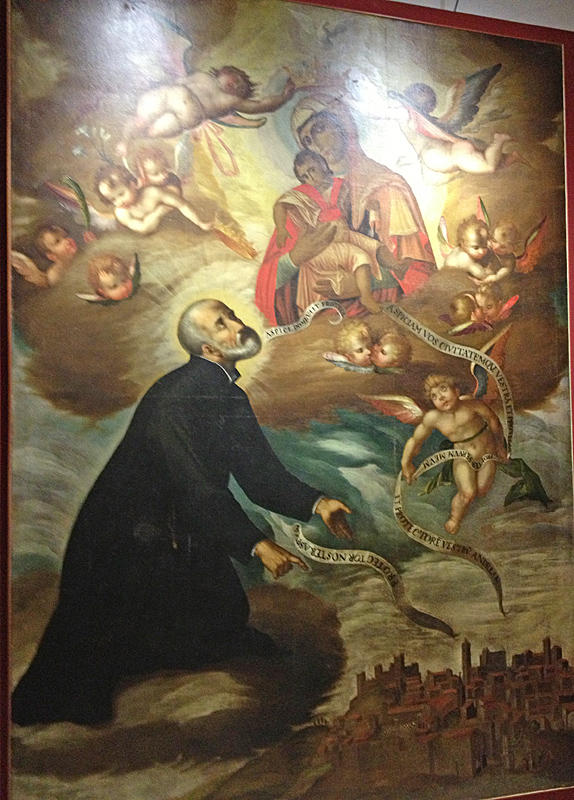
Antonino Cinniardi
Saint Andrew Avellino Intercedes for Piazza Armerina at Madonna of Victories
Circa 1626-41, restored 2011
Oil on canvas, 100.8 x 72.8 in. (256 x 185 cm.)
Pinacoteca Comunale, Piazza Armerina, Italy
Originally in the Church of San Lorenzo, Piazza Armerina
In the 16th century St. Andrew Avellino was active in the movement to reform the clergy and
religious
in Italy. He was the superior of the
Theatine
house in Naples from 1594 until his death in 1608 (Butler, IV, 305-306; Acta Sanctorum, November vol. 4, 609-623).
Soon after the saint's death two of his fellow Theatines brought a relic to Piazza Armerina, a tuft from his beard. The relic was credited with a role in preserving a part of the city from the plague of 1624 that had ravaged all of Sicily. In consequence, St. Andrew Avellino was declared co-patron of Piazza Armerina in 1626 ("Cronarmerina - Come Eravamo").
In the above image the saint wears the usual Theatine habit, a black cassock with a high collar that has a white liner. Avellino's likeness was painted before his death and provided the model for our painting and other images in Italy (Acta Sanctorum, ibid., 620). His feast day is November 10.
The painting is historically significant because it pictures the city as it was in the second quarter of the 17th century. The "Madonna of Victories" in the title is Piazza Armerina's cathedral. There is really no fixed iconography for the Madonna of Victories or Our Lady of Victories. This image of her recalls the numerous Byzantine iconographic types in which the mother's face is pressed to the child's as her eyes engage the viewer. The Madonna of Victories' feast is October 7, the anniversary of the Battle of Lepanto, in which the Ottoman navy was defeated by the Holy League (Venice, Spain, the papacy, and several Italian states).
View this image in full resolution.
Photographed at the Pinacoteca Comunale by Claire Stracke, shared under Attribution-NonCommercial-ShareAlike license.